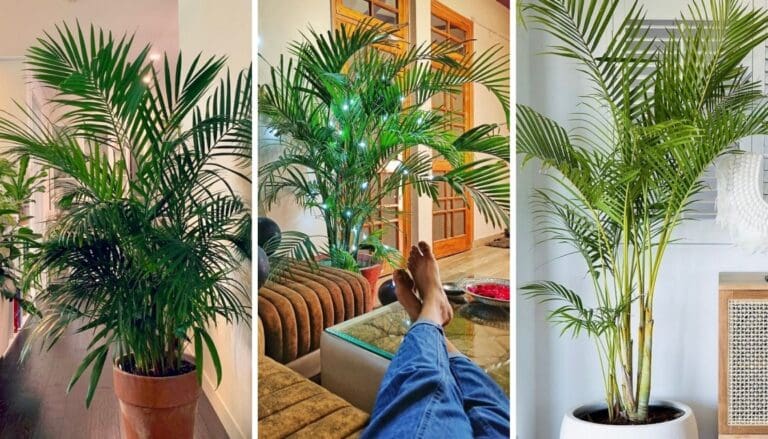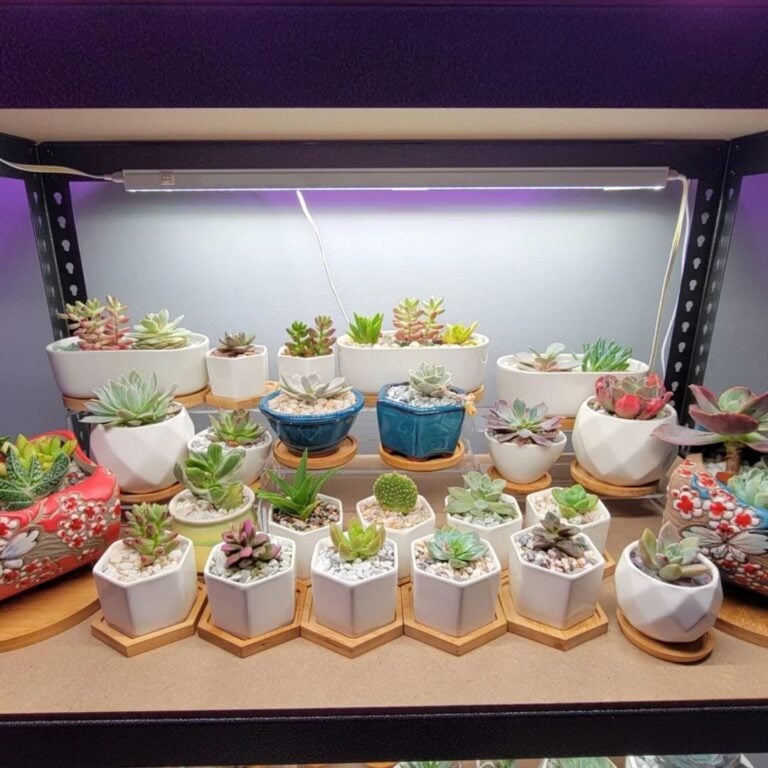6 Creative Propagation Jars Using Recycled Glassware
I always seem to end up with a pile of old jars and bottles that are just too nice to toss out. Instead of letting them gather dust, I’ve started giving them a second life.
Turning recycled glassware into propagation jars means I get to grow new plants and cut down on waste at the same time.
It’s honestly such a simple project—just a few steps and suddenly, my space feels greener and a bit more creative. Plus, it’s a small way to help the planet.
Please note: Simplify Plants is reader-supported. As an Amazon Associate, I earn from qualifying purchases made by our readers with no extra cost added to you all! Some links in the post are affiliate links and I get a commission from purchases made through links in the post.
1) Mason Jar Succulent Planters
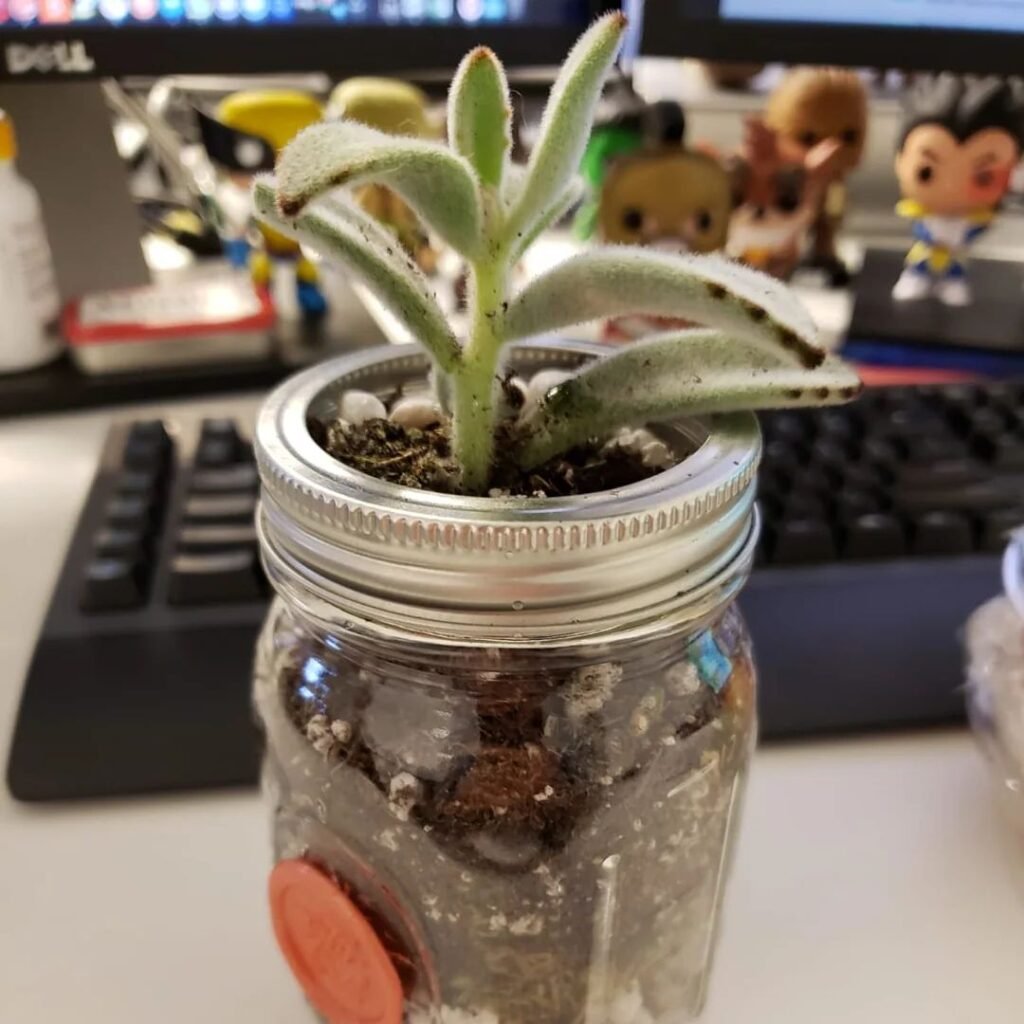
I’m a fan of using mason jars for succulent planters. They’re everywhere—thrift stores, cupboards, you name it.
Their clear glass is handy for keeping an eye on roots and soil. I start by cleaning out a mason jar, then toss in a layer of small pebbles for drainage.
A scoop of cactus soil goes on top of the rocks. After that, I gently set a small succulent in, making sure the roots are covered.
If it’s a bit wobbly, I just add a little extra soil to steady things. I’m careful not to overwater—succulents definitely prefer it dry.
Mason jars look great on windowsills, desks, or even outside on a balcony. Sometimes I’ll tie some twine or ribbon around the neck for a bit of flair.
They make sweet little gifts, too. A quick label or a tied-on tag and you’ve got a thoughtful, living present.
I avoid putting mason jar planters in direct, hot sunlight—the glass can heat up fast. Bright, filtered light keeps succulents happy.
I wait until the soil is bone dry before watering again. Using recycled mason jars saves cash and keeps more glass out of the trash.
Each jar ends up as a tiny, unique home for my plants.
2) Wine Bottle Propagation Station
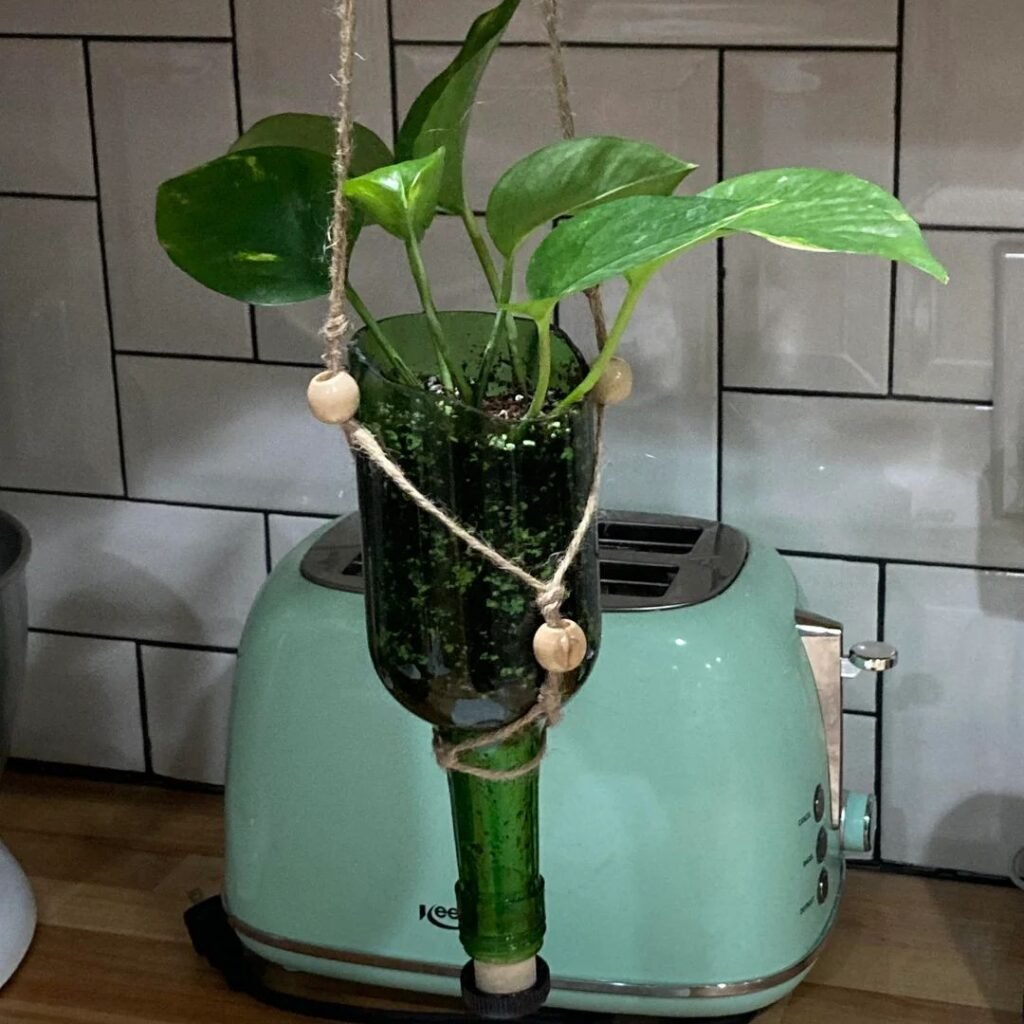
Empty wine bottles are just begging to be reused. I’ve found they’re perfect for propagating plant cuttings.
I pick a clean bottle, peel off the label, and rinse it out. Some bottles have really gorgeous colors that look great in the sun.
I fill the bottle with fresh water and pop in a plant cutting—just the stem in the water, not the leaves. If the neck is narrow, it holds the cutting upright on its own.
Sometimes I’ll use a rubber band or a bit of tape to help if the stem is wobbly. Wine bottles are especially good for long-stemmed plants, like pothos or monstera.
The tall shape keeps cuttings nice and straight. I set the bottle somewhere with bright, indirect light.
It’s easy to see when the water needs changing since the glass is clear. Swapping out the water every week keeps things fresh.
Using wine bottles means I don’t have to buy new vases. Watching roots grow inside is surprisingly fun.
Sometimes I mix different shapes and colors for a bit of extra style. Friends always ask about my plant bottle collection and seem surprised it’s just a bunch of old wine bottles.
Turning empty bottles into propagation stations is honestly one of the most satisfying ways to grow my indoor jungle.
3) Vintage Teacup Cuttings Holder
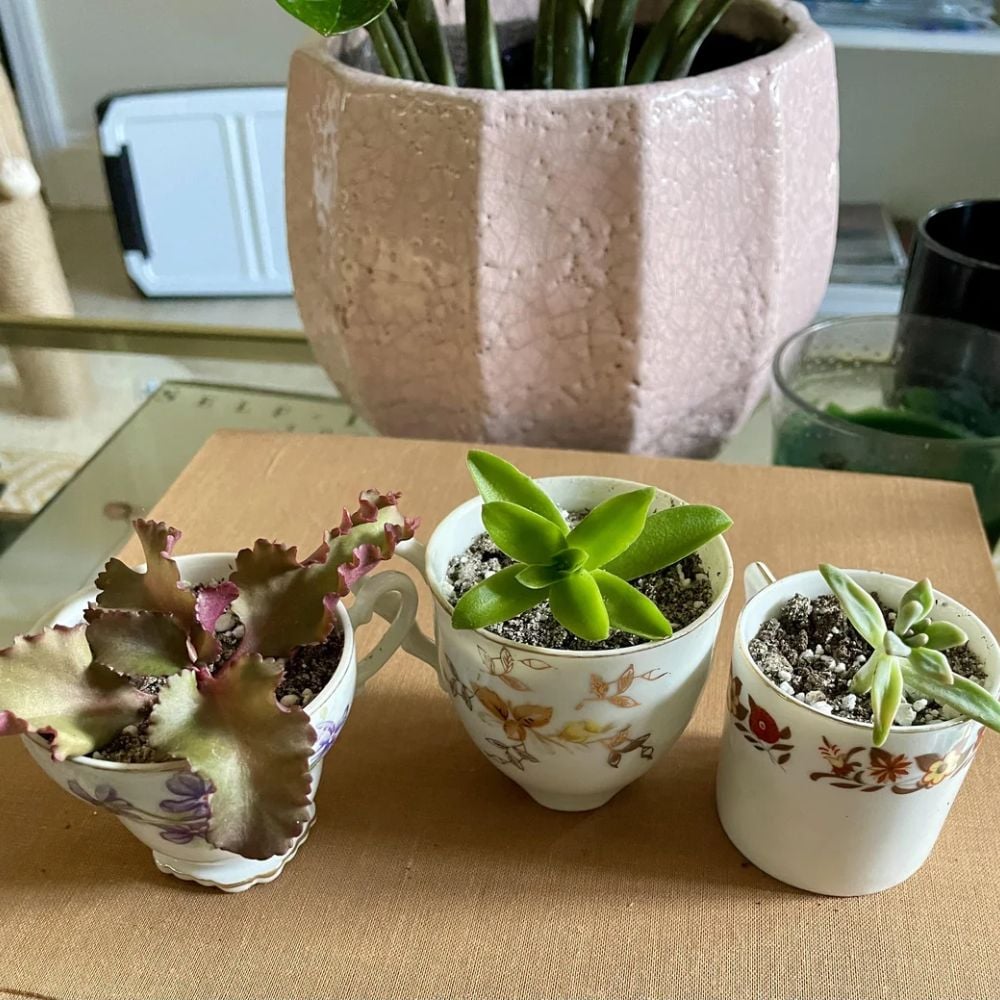
Old teacups make adorable little plant holders. There’s something about a vintage teacup that just feels right for water propagation.
I look for teacups with fun patterns or colors—chipped ones work fine, too. They look charming on a shelf or tucked by a window.
I fill the teacup with clean water and drop in a cutting. Thin-stemmed plants like pothos or ivy are perfect for this.
I make sure the stem is long enough to reach the water, but the leaves stay dry. Clear glass teacups are great for watching roots, but patterned cups add a cozy vibe.
Each teacup brings its own personality to the mix. They’re easy to move around, so I shuffle them to wherever the light’s best.
When I have a few going at once, I’ll group them together for a cute little display. Once the roots are an inch or two long, I pot them up and reuse the teacup for another round.
Thrift shops are full of old teacups, usually for next to nothing. Upcycling glassware like this just feels good—creative, simple, and a little bit whimsical.
4) Recycled Perfume Bottle Vases

I’ve started saving empty perfume bottles—they make unexpectedly perfect little vases. Their shapes and colors are so unique, it’s almost a shame to throw them away.
First, I clean out the bottle really well. I rinse several times with warm water to get rid of any lingering scent.
This way, my plant cuttings have a safe place to grow. I fill the bottle about halfway with water, trim a cutting, and slip it through the neck.
Those narrow openings help support the plant, which is handy. Perfume bottles look great on a windowsill or tucked on a desk.
They add a pop of color and just a bit of elegance, no extra decorating needed. I like to group a few together for a creative display.
Each bottle brings its own flair, and no two are quite the same. If I’m short on bottles, I’ll ask friends or family to save theirs.
Even tiny bottles work for smaller cuttings. I change the water every few days to keep things fresh.
Watching roots appear in these little vases always makes me smile. Using recycled perfume bottles is such a simple, eco-friendly way to get started with plant propagation.
It’s creative, looks beautiful, and keeps glass out of the landfill.
5) Honey Jar Aquatic Propagators

Empty honey jars are surprisingly useful. Once the honey’s gone, the clear glass and cute size make them perfect for plant cuttings.
I wash the jar, peel off the label, and scrub away any sticky bits. Baking soda or warm soapy water usually does the trick.
Once it’s clean, I fill it with fresh tap water. I snip a healthy stem cutting, usually from pothos, philodendron, or even basil.
I make sure to cut just below a leaf node and drop the stem in so the leaves aren’t sitting in the water. The wide opening gives roots plenty of space.
Clear glass lets me watch the roots grow, which is honestly half the fun. Sometimes I use jars with textured designs for a little extra character.
I change the water every few days. These jars live on my windowsill, but I keep them out of harsh direct sun.
After a few weeks, roots usually start poking out. Recycled honey jars save money and keep more glass out of the trash.
It’s a super simple project—just a spare jar and a cutting, and you’re off to the races.
6) Old Olive Oil Bottle Hydroponics

Empty olive oil bottles are great for hydroponics. The glass is thick and often tinted, which helps keep roots a bit more comfortable.
These bottles are usually tall, so there’s plenty of room for roots to stretch out. I clean out any leftover oil, fill with water, and drop in a plant cutting.
Most cuttings—herbs, Pothos vines, whatever’s handy—fit through the opening just fine. I keep the bottle near a sunny window but out of direct rays, so things don’t get too warm.
A splash of liquid plant food can help boost growth. Watching roots snake down the neck of the bottle is oddly satisfying.
Since olive oil bottles are sturdy, I don’t worry about them tipping over. They look cool on the kitchen counter, too.
Repurposing these bottles is an easy way to try hydroponics at home. I get to recycle and expand my plant collection—win-win!
Benefits of Using Recycled Glassware for Propagation
I love using recycled glassware for plant propagation. It helps the planet and just makes my home look a little more interesting.
The mix of environmental benefits and unique decoration is honestly hard to beat.
Sustainability and Environmental Impact
Using recycled glassware keeps jars and bottles out of the landfill. I’m cutting down on waste and making use of stuff that would otherwise get tossed.
Glass can be reused again and again without losing quality. Jars from pasta sauces, drinks, or candles all work.
That saves energy and resources compared to buying new planters. Plus, I avoid plastic and lower my carbon footprint a bit.
It feels good knowing I’m helping the environment in my own small way.
Aesthetic Appeal in Home Decor
Recycled glass jars come in all sorts of shapes and colors. They’re way more interesting than standard store-bought planters.
Clear glass lets me watch roots grow, which is surprisingly fun. Colored or patterned jars give my space a creative boost.
I like matching different cuttings with different jars for a personalized look. Vintage bottles or mason jars can turn a simple plant into a statement piece.
No two displays end up looking the same, so my space always feels a little bit special.
Care Tips for Propagation Success

Getting plant cuttings to thrive is mostly about keeping things clean and giving them the right light. Clear water and good light are non-negotiable for me.
Cleaning and Preparing Glass Jars
I always start by washing jars with hot, soapy water. Labels, dirt, and sticky stuff have to go.
If there’s hard water buildup, a soak in vinegar and water for 15 minutes usually does the trick. I make sure to rinse really well so there’s no soap left.
I dry the outside but let the inside stay a little damp. Before adding cuttings, I check for cracks or chips—no one wants leaky jars or damaged roots.
Regular cleaning matters. Every week, I swap out the water and scrub the jar with a soft bottle brush.
That keeps algae and bacteria at bay and helps my plants stay healthy.
Optimal Placement and Lighting
I usually keep my propagation jars in bright, indirect sunlight. Direct sunlight? That’s a no-go—it can heat up the glass and scorch those delicate new roots.
Honestly, a north- or east-facing window tends to be the sweet spot for steady growth. If the room’s on the dim side, I’ll just pop a small grow light nearby.
I never put jars too close to heating or cooling vents. That’s asking for trouble with temperature swings.
Light really does matter. Not enough, and roots get kind of flimsy. Too much, and the leaves might burn or the water heats up too much.
I find myself checking most days for healthy roots. If something looks off, I’ll adjust the light.
Frequently Asked Questions
Honestly, I’m a big fan of using recycled glassware for plant propagation—it looks great, and hey, it’s good for the planet too.
Mason jars, wine bottles, even old perfume bottles—they all make plant care a bit more interesting and personal.
How do I prepare glass jars for plant propagation?
First thing, I wash the jars with hot, soapy water to get rid of any dirt or sticky labels.
After that, I rinse them really well so there’s no soap left. I lean toward clear glass since it lets me watch the roots do their thing.
What are some creative ways to use old bottles as propagation stations?
I like using wine bottles and mason jars for water cuttings.
Sometimes I’ll grab a vintage teacup or a quirky old perfume bottle for tiny clippings. Even honey jars can work—just fill them with water and pop a stem inside.
Can all types of glassware be used for propagating plants?
Most glass containers are fine as long as they’re clean, not chipped, and deep enough for the stems.
I steer clear of anything with a super narrow neck if the cuttings are chunky. Colored glass looks cool, but I still go for clear glass so I can check on the roots easily.
What are the best plants to propagate in glass jars?
I usually reach for plants like pothos, philodendron, spider plants, and succulents since they root fast in water.
Herbs like mint or basil work too—just stick a cutting in a small jar and wait.
How do I ensure proper water levels and nutrition for plants in recycled glassware?
I keep the bottom few inches of the stem under water and make sure the leaves stay dry.
Every week or so, I swap out the water to keep things fresh. Sometimes I’ll add a tiny drop of liquid plant food—just enough to give those roots a little boost.
Are there any special care instructions for propagating in glass containers?
I like to keep my jars somewhere with bright, indirect light—nothing too harsh, or the plants might overheat.
Honestly, I check for algae or grime pretty often and just give the jars a good rinse when they need it. If I spot any mold, I’ll pull the cutting out and wash everything before giving it another go.
Recommended Garden Supplies
| Product Image | Our Recommended Gardening Supplies | Check Offers! |
|---|---|---|
Top Top
Top
Top
Top
Top
Top
Top
Top | rePotme Houseplant and Tropical Classic Potting Soil Mix | Check Offer On Amazon |
 Top
Top
Top
Top
Top
Top
Top
Top | Espoma Organic Indoor Plant Food | Check Offer On Amazon |
 Top
Top
Top
Top
Top
Top
Top
Top | GooingTop LED Grow Light 6000K Full Spectrum Clip Plant Growing Lamp | Check Offer On Amazon |
 Top
Top
Top
Top
Top
Top
Top
Top | Soil Moisture Meter | Check Offer On Amazon |
 Top
Top
Top
Top
Top
Top
Top
Top | Govee Hygrometer Thermometer, Bluetooth Enabled! | Check Offer On Amazon |
 Top
Top | LEVOIT Humidifiers for Large Room(Best For Plants) | Check Offer On Amazon |
 Top
Top
Top
Top
Top
Top
Top
Top | Upgraded DIY Automatic Drip Irrigation Kit, 15 Potted Houseplants Support | Check Offer On Amazon |
 Top
Top
Top
Top
Top
Top
Top
Top | Stainless Steel Heavy Duty Gardening Tool Set | Check Offer On Amazon |
 Top
Top
Top
Top
Top
Top
Top
Top | Bonide Insecticidal Soap | Check Offer On Amazon |
 Top
Top
Top
Top
Top
Top
Top
Top | Bonide 32 oz Spray Neem Oil for Organic Gardening | Check Offer On Amazon |
 Top
Top
Top
Top
Top
Top
Top
Top | Garden Safe Fungicide | Check Offer On Amazon |

